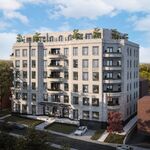Rainforest
Senior Member
You could build both the curbside or in-median BRT and the Finch Hydro corridor BRT for the same cost of building the Finch LRT. You would get more capacity, and you would essentially have an express/collector route operating in the same general area. Those who are in it for the long haul would either walk up to the hydro corridor, or transfer onto it at one of the N-S concessions (since that's likely where the only stops would be). Those who want local transit can stay on Finch. In fact, you could probably even do the Finch lanes as curbside HOV lanes, and you would get nearly the same efficiency (since a significant number of riders would use the Hydro Corridor route instead, reducing frequencies on Finch and reducing bunching).
The Hydro Corridor BRT route could be touted as a transit project, and the HOV lanes as a road widening project. In the end though, transit wins in both cases. Nobody really loses, because it becomes an "either or" choice. And yes, this whole scheme likely could be built over the same distance as the FWLRT for about the same cost, considering that I have referenced several times that BRT projects come in at around 1/3 to 1/2 the capital cost of LRT projects.
PS: I think the HOV lanes on Finch would be more attractive for Fordites than bus lanes, because with HOV, it is technically increasing road space for cars.
This is an interesting view. However, one disadvantage of running two parallel services is higher operating costs. Off-peak, the frequency of most routes is determined not by the vehicle capacity but by the need to provide a reasonably frequent service, even if the vehicles are far from being full. To run two closely-spaced parallel lines at a decent frequency off-peak, more vehicles will be needed.






